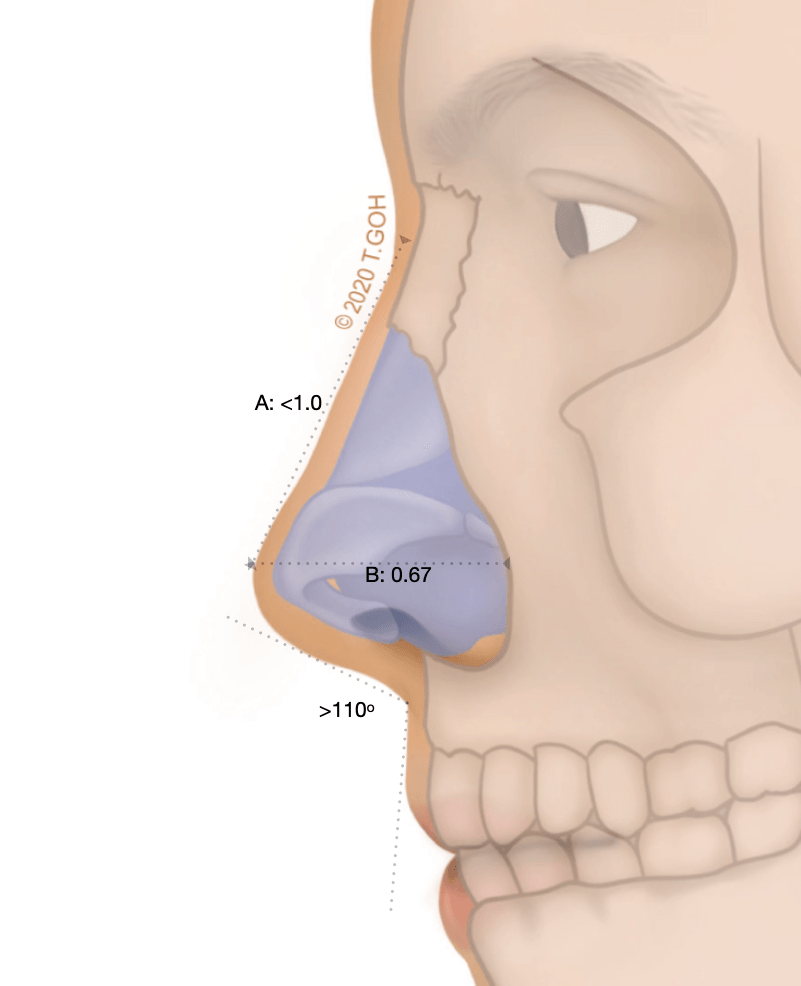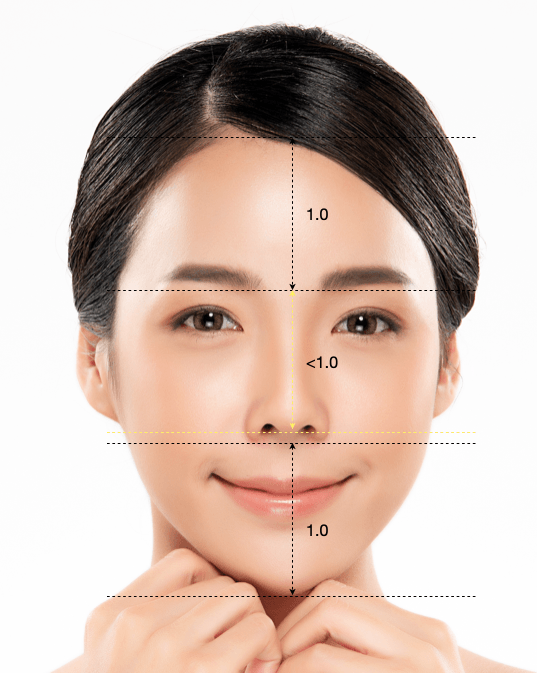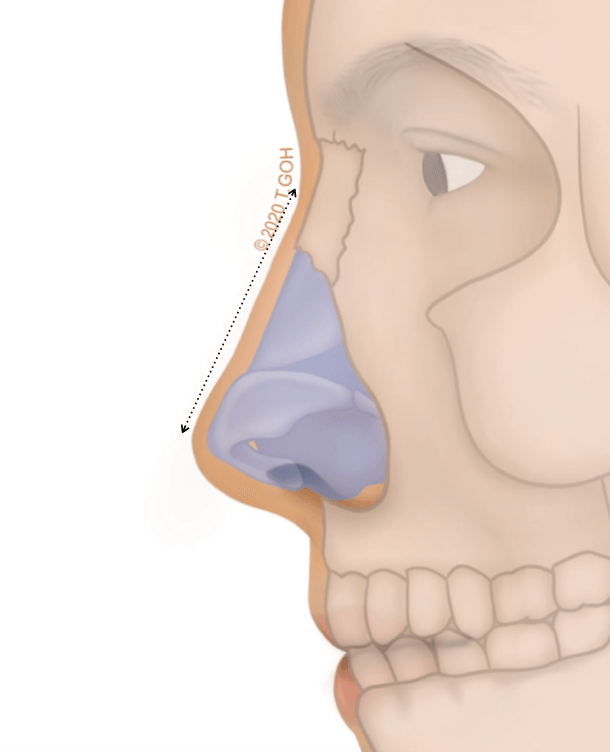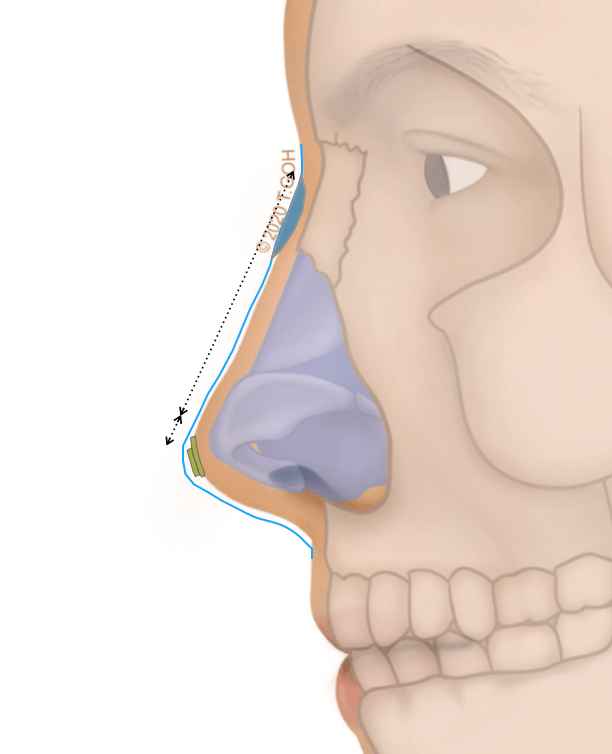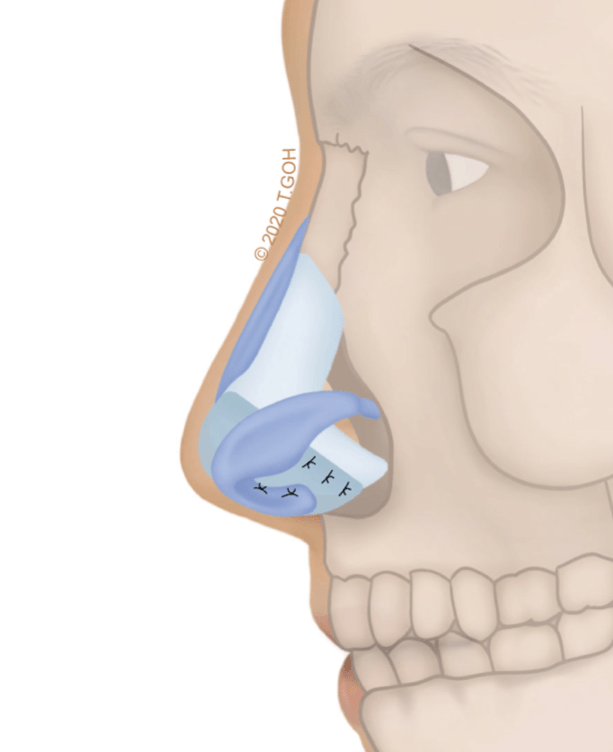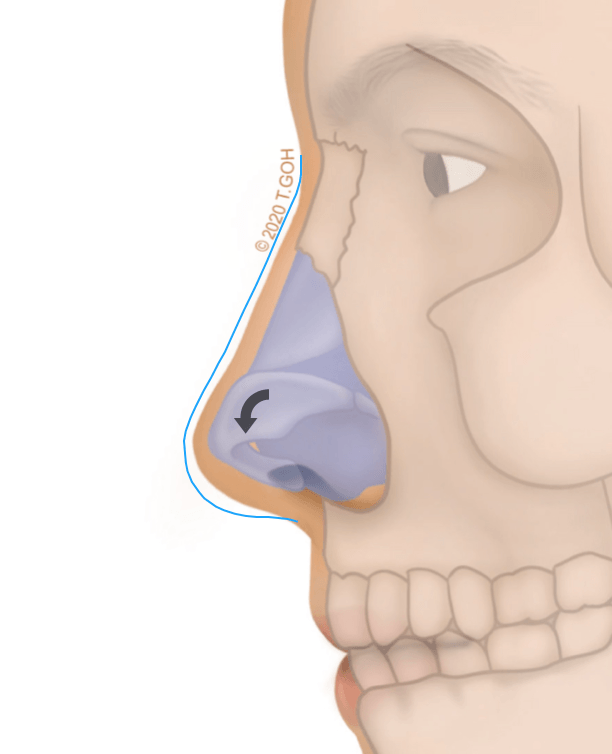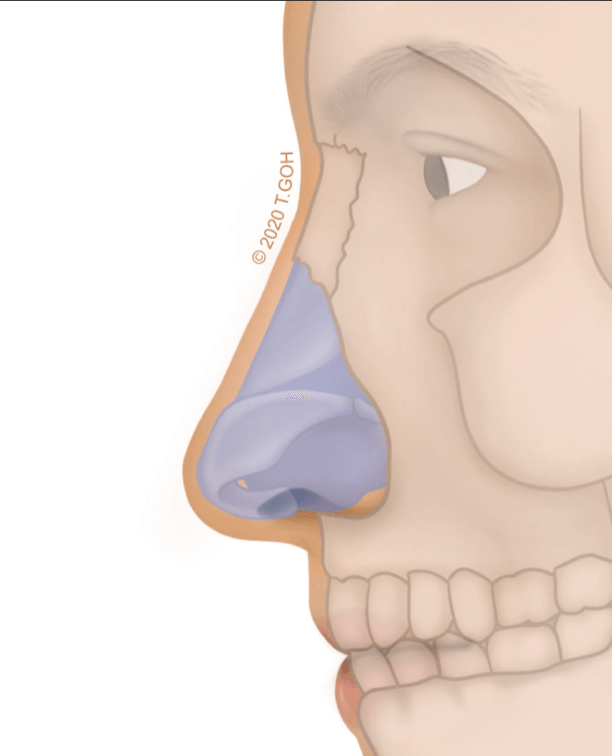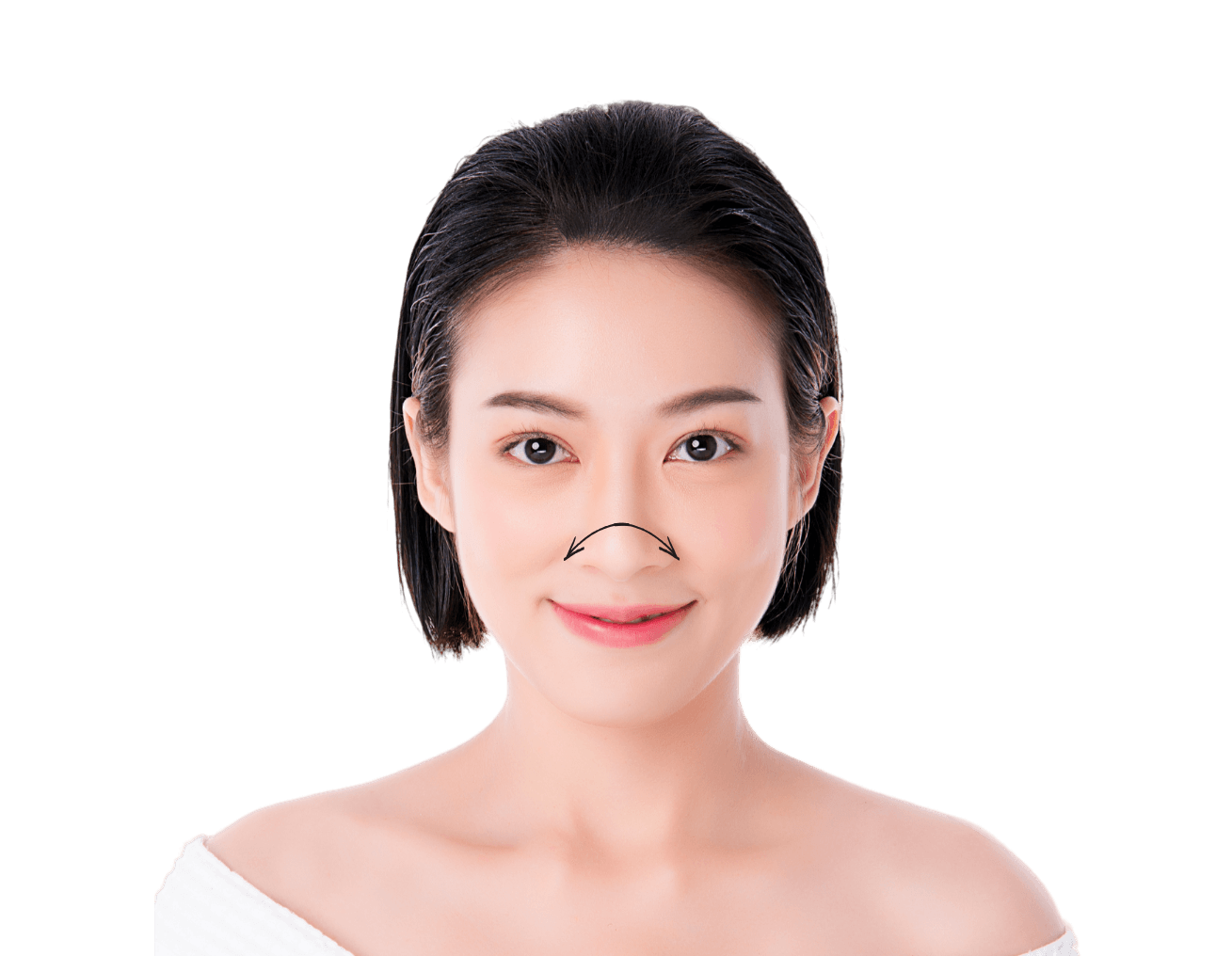BOOK A CONSULT TODAY
+65 67788-648
ROYAL SQUARE MEDICAL CENTRE
101, IRRAWADDY ROAD #14-09
AZATACA PLASTIC SURGERY CENTRE (ORCHARD)
MOUNT ELIZABETH HOSPITAL
3, MOUNT ELIZABETH ROAD #15-11
Follow us
The short nose can affect the tip, causing it to be up-turned and exposing the nostrils excessively.
The short nose is one of the more challenging conditions to rectify in Asian rhinoplasty.
What is a considered a short nose?
A short nose would have a nose-lip angle of more than 110 degrees.
The ideal nose would have a height to length ratio of 0.67:1.0. In a short nose, the length would be less than 1.0. (A<1.0)
HOW IS SHORT NOSE CORRECTION DONE ?
Simplified steps to explain the science behind the art of Plastic Surgery
The nasal tip is upturned due to a very mildly short nose. A camouflage procedure can be done to create the illusion of a longer nose.
Fascia graft can be placed at the forehead area (labella) and cartilage grafts can be placed on the tip (tip grafts) to increase the tip length and also to rotate the tip downwards. This creates the illusion that the nose is long and the tip is not tilted up without the need for structural work.
The nose is lengthened with the use of septal extension grafts (cartilage taken from the septum; does not need extra scars). Using suture techniques
and the tripod concept
would enable the new structure of the tip to be stable and prevents recurrence of the short nose in the future.
Septal extension grafts in comparison to extended spreader grafts will create a nose that is more supple and less stiff and rigid. More patients prefer this so that they can move their nose naturally.
De-rotation of the alar cartilage and release of the cartilage from the pyriform aperture will enable the tips of the nose to be advanced without tension so that it does not cause a recurrence in the long term.
In most cases both septal extension grafts and de-rotation of the cartilages are required to create a stable nose that does not relapse.
